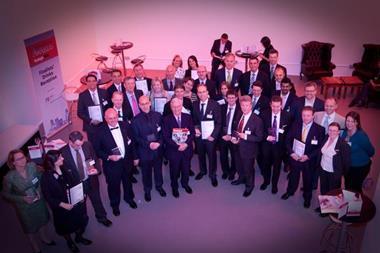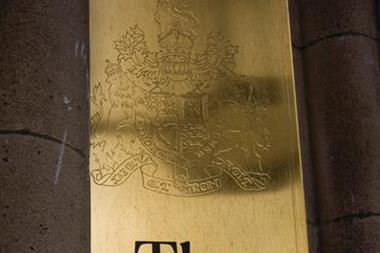Mike Reynolds, chairman of ACE European Group’s risk committee, is a believer in getting the understanding and reporting of risks just right, Nathan Skinner discovers. Just don’t get bogged down in the small details
In a continuation of our editorial drive to support the risk manager StrategicRISK spoke to ACE European Group’s (AEG) chief financial office, Mike Reynolds. We asked Reynolds, who is chair of AEG’s risk committee, about how the risk reporting frameworks are set up in his company and how he thinks risk managers can improve their communication with the board.
AEG’s financials last year were impressive compared to some of its peers. Net income grew 6.5% based on a combined ratio of 88%. “A lot of it was driven by the benign year from a catastrophe point of view,” Reynolds comments on the good results. “Our investment portfolio also rebounded significantly in 2009. ACE European Group’s investment portfolio gained 9% during the year, which more than recovered the losses from the prior year, which was great.”
“ACE is very well placed to ride out the economic downturn,” he continues. “The strategy we have pursued in terms of underwriting profitability stands us in good stead for riding out the issues in the market. Also on the investment side, the strategy – in terms of understanding we are taking significant risks on the liability side of the balance sheet and therefore need to minimise risk on the asset side of the balance sheet – has stood the company in great stead as well.”
Flattered results
It’s that conservative investment strategy and the philosophy of reducing asset risk that allowed AEG to steer clear of some of the dubious investments that caused so much trouble for other parts of the financial sector. “Obviously all shapes and forms of investments were hit during 2008 and so there were losses taken on certain positions,” says Reynolds. “But it’s certainly rebounded now significantly, and ACE has shown that it had the right strategy through the downturn.”
But the recovery of asset prices and 2009’s benign year for catastrophes may have “flattered” the insurance industry somewhat, he warns, and this could be hiding the true financial position of some firms in the sector. “You have to look at individual companies a little bit to strip out prior-year development, such as releases from reserves, which are masking some of the current-year profitability issues. If you strip those out, you’ll find there are differentials between how companies are doing. But I certainly think that overall the industry has, compared to the banking industry, looked pretty good. And the balance sheets are probably as strong as they have been for a long time.”
Reynolds describes the risk management approach at AEG: “We focus on underwriting discipline on a line-by-line basis. We look clearly at balance sheet management and capital management, which has been extremely important over the last two years to make sure we’ve managed our way through the downturn effectively. And thirdly we focus on operational risk management.
“One thing we will say is we don’t write risks that we don’t understand. We make sure we understand exactly what’s behind the proposals. As long as we understand it we are prepared to take risks.”
As chair of the risk committee, a formal sub-committee of AEG’s board with sitting independent non-executive directors, Reynolds has some strong opinions about how risks should be reported. “Essentially, the risks are tracked by the risk management division and brought to the risk committee for discussion. The risk committee acts as the control mechanism in terms of understanding all the risks the company is taking and then filtering through the major risks – the ones that could have a significant effect on us – to the board for further discussion.”
Issuing some advice to risk managers on their presentations to the board, Reynolds says: “Some risk managers get bogged down a little bit in the detail. I’ve often seen that when organisations are in the start-up phase people get bogged down on the most minute issue instead of focusing on what the major issues are.
“ACE has got to a point where it has refined the information that is coming to the risk committee such that it is tailored for the audience, so we can have a proper discussion around what the severity or probability of the risks are and also if we have the right mitigation measures in place.”
He continues: “It’s all about presentation. When you sit in the risk committee, you have non-executive directors, executive management and heads of the leading departments in there; you want to run something that is efficient and is boiling down the issues.”
Stand up and be counted
The problem that some financial institutions may have got into prior to the crisis is that risk wasn’t given the credence it deserved, he says. “Some of the board members may not have understood some of the issues that were brought forward, and were not able to distil what the effect would be on the business. And some people were afraid to stand up and be counted in relation to that. And finally I would say there is also a feeling that some of the risks, like extreme tail or correlated events in the banking industry, were not on the agendas of risk managers, so it’s a combination of credibility, effectiveness of the board, and making sure you are picking up all the risks, including the tail risks.”
How then can risk managers improve their credibility and make sure they receive the attention they deserve? “To be honest, given what’s happened globally with the financial crisis, risk management has come to the fore. Senior executives, non-executive directors, regulators, everybody now understands the importance of risk managers and recognises that, until you embed the concept of risk management into the grass-roots level of the organisation rather than give it lip service, you are not going to improve your chances of minimising those bad events.”
The other consideration is that risk managers themselves need to step up to the plate and embrace the challenge, he says. And they should do so in such a way that they can demonstrate how their efforts over time have made a significant contribution to avoiding those major risks.




















No comments yet